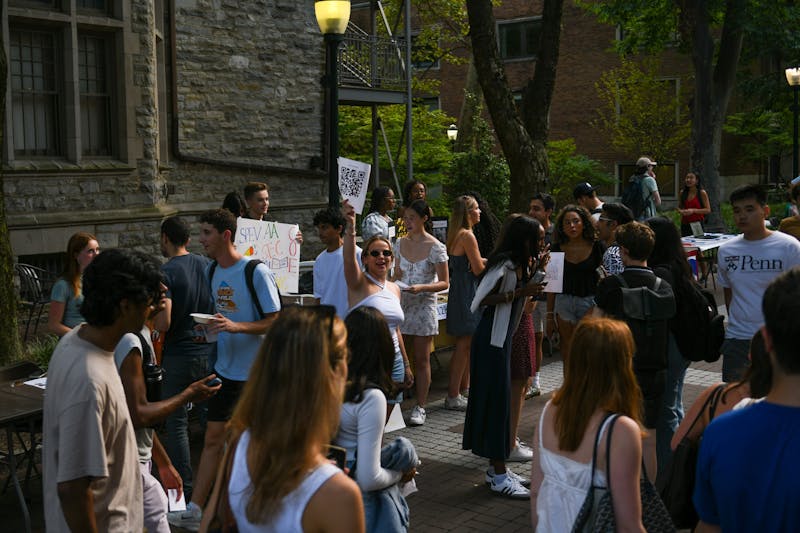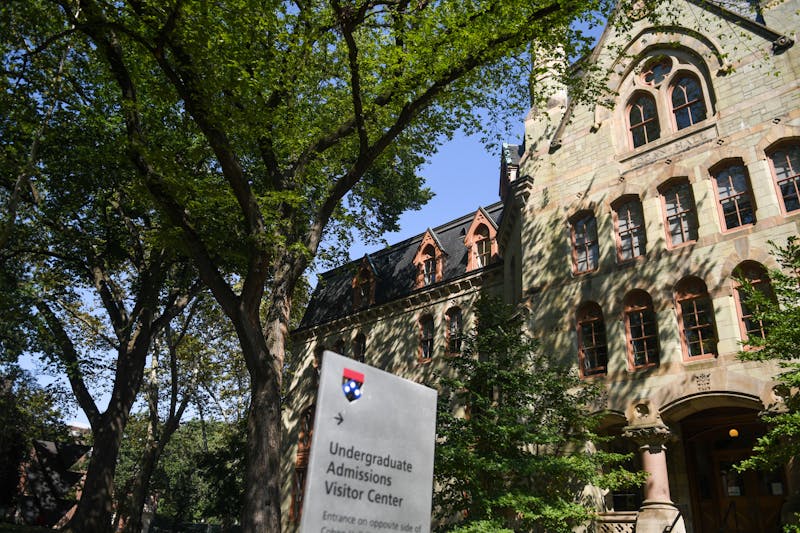Ending a long debate, the government agreed with Penn's reporting rules but cited minor violations. After a nearly year-long review involving thousands of documents and numerous interviews with administrators, the U.S. Department of Education last week cleared the University of the biggest of its alleged crime-reporting violations -- that it had systematically attempted to cover up campus crime. But the report, issued to the University Friday, concluded that Penn committed six lesser violations, including failing to report an alleged on-campus rape in 1994 that is currently the subject of a lawsuit. The Philadelphia Inquirer reported in November 1996 that only about 10 percent of the robberies reported to Penn Police in 1995 were designated as having occurred "on-campus" and were thus included in statistics distributed to the University community and prospective students under federal and state law. Following that article, the DOE began investigating whether Penn was following the Crime Awareness and Campus Security Act of 1990. "I am of course pleased but not surprised in the conclusion," University President Judith Rodin said. "I think right now they are saying very clearly that Penn is [reporting crime] according to the federal guidelines." Rodin stressed that the University will "make the corrections [the DOE] recommended" on the six violations and that "their interests and our interests are aligned." The University has 30 days to tell the DOE the steps it has taken to remedy the problems. Penn is one of five universities the DOE has investigated or is currently investigating for such violations. Federal guidelines define an "on-campus" area as a "property owned or controlled by an institution within the same reasonably contiguous geographic area and used by the institution in direct support of, or in any manner related to, the institution's educational purpose." Reporting crime at urban universities is often difficult because of the lack of defined boundaries between what is on campus and what is not. Rodin said the distinctions between urban schools and more defined rural campuses make it impossible to compare "apples to apples." DOE investigators examined a printout of the 1995 robberies -- along with other data from 1994 to 1996 -- and determined that the University was in full compliance with federal guidelines for the 204 incidents. These charges were the most serious that the DOE examined, as they called into question the University's entire crime-reporting procedure. Only a limited amount of the University Police's patrol area -- which extends from Market Street to Baltimore Avenue and the Schuylkill River to 43rd Street -- counts as "on campus." Any criticism by the DOE could have made Penn appear to be more dangerous than the on-campus statistics may indicate. Instead, the DOE report found only six areas of violations unrelated to the definition of "on campus." Two of the violations noted by the DOE report accused the University of not reporting specific incidents. Although the University initially reported that no rapes occurred on campus in 1994, the DOE said handwritten notes from 1994 by Maureen Rush -- then director of Victim Support and Special Services -- indicate that a rape was reported in a Penn dormitory on November 18, 1994. Rush, now the University's director of police operations, and the University are defendants in a February 1997 lawsuit filed by the alleged rape victim accusing the University of failing to protect her and not including the incident in its annual reports. University officials declined to discuss the alleged incident. The case may be called to trial in June in U.S. District Court in Philadelphia. According to the DOE report, "the University decided during the summer 1997 that the reported November 18, 1994 incident should have been included in the 1994 crime statistics." But the statistics -- which tally reported incidents and not proven crimes -- were not altered and redistributed by September 1997. Rodin said Penn had not wanted to make any changes in its policies during the probe, noting that "we didn't think we should do anything before [the DOE] findings." A recent copy of the statistics Penn submitted to the state and federal governments says one "forcible rape" incident was reported in 1994. An asterisk indicates that "this figure represents a change in the previously reported number." Jack Feinberg, the attorney for the plaintiff in the case, said he would present the information to the jury to demonstrate that Penn "doesn't follow the rules and regulations and do the right thing." But the DOE findings do not prove a "causal relationship" between Penn's failure to report the alleged crime and the "wrong done" to the plaintiff, Feinberg said. The plaintiff transferred out of the University after the incident. The accused rapist, a current Penn student, is also a defendant in the suit. The DOE report also cited the University for not listing eight student alcohol violations handed out by the Pennsylvania State Police's Bureau of Liquor Control Enforcement during Spring Fling in 1996. Seamon said the issue stems from "administrative error" between the University and the LCE, and that he is now reviewing the LCE citations. And Rodin noted that "there's still quite a debate" nationally over whether citations such as liquor violations should be considered arrests at all. In his interviews with DOE investigators, Seamon said a citation should count as an arrest, according to the report. The DOE also told the University that it failed to "complete separate statistics for separate campuses" and "include statistics for all campus locations." Because the Morris Arboretum in Philadelphia's Chestnut Hill section and the Veterinary School's New Bolton Center in Kennett Square, Pa., are "not reasonably contiguous to the main campus," the review said their statistics should be listed separately. And crime at the Hospital of the University of Pennsylvania, which is located at 34th and Spruce streets, must be included because of the building's location and its use as an educational facility, the DOE said. Rodin questioned the necessity of including crime at HUP, which she said would "certainly skew the data" upward. The DOE also accused the University of failing to adequately notify all prospective and current students of the Campus Security Report's availability. Although University spokesperson Ken Wildes said Penn mailed out 73,000 letters telling prospective students of the statistics' availability and 15,000 brochures with the statistics themselves, the DOE findings indicated that the information should be included with the University's applications for admission. Also, Penn makes the crime statistics available on its Web site. But the DOE said finding the information requires too much "initiative" on the part of students. Instead, the DOE report indicated that the University must mail each student a copy of the statistics every year. The DOE report also criticized the University for failing to include hate-crime statistics in its listings. But because there were no such incidents in any of the crime categories the University has to report, solving this problem would simply require stating that the number of such cases was zero for each year, Rodin said.
The Daily Pennsylvanian is an independent, student-run newspaper. Please consider making a donation to support the coverage that shapes the University. Your generosity ensures a future of strong journalism at Penn.
DonatePlease note All comments are eligible for publication in The Daily Pennsylvanian.







